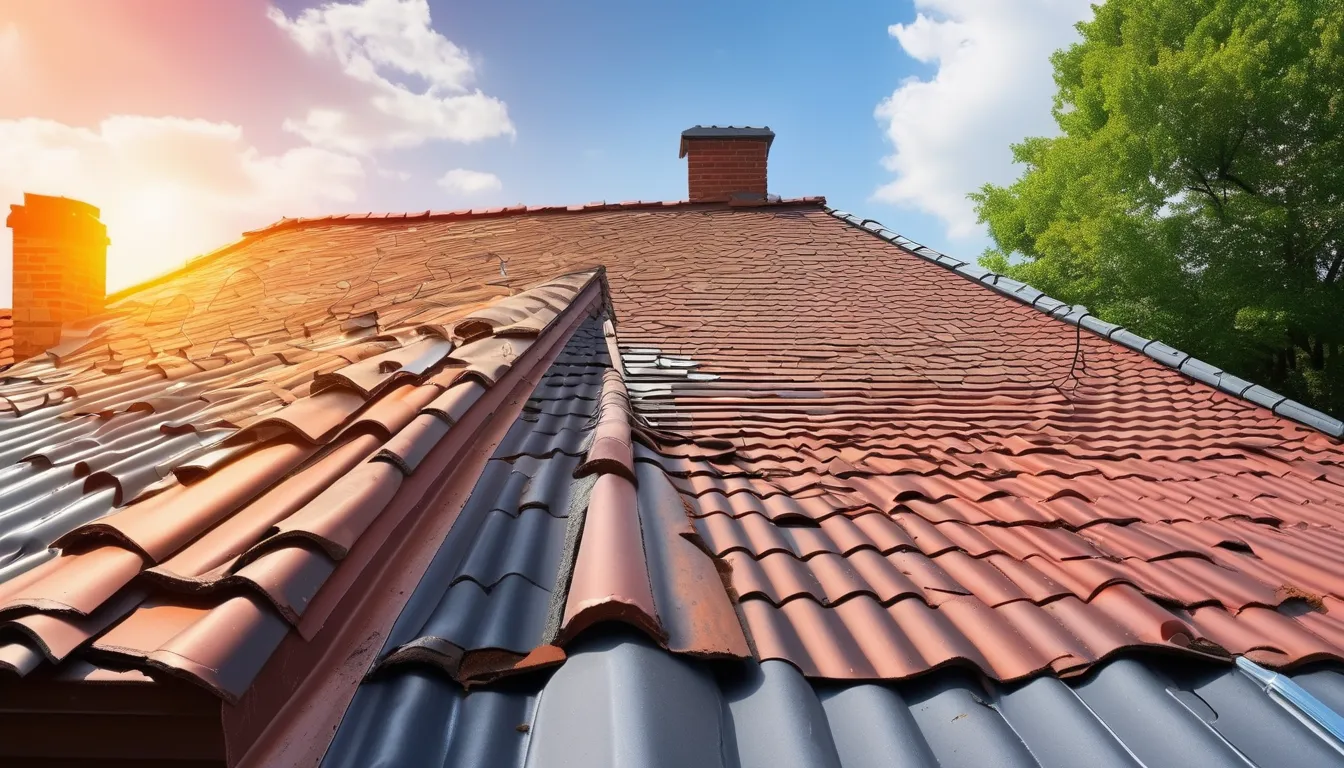
You take pride in your home, but you can’t ignore the signs of wear and tear on your roof. Missing or loose shingles, sagging roof frames, and leaky gutters all point to potential problems that could put your entire house at risk. Don’t wait for a costly catastrophe to strike – instead, take control with simple, effective repair strategies. By learning the right techniques and using essential tools, you can transform your roof from a potential liability to a secure, sturdy structure. But where do you start, and what repairs should you tackle first?
Identifying Roof Damage Signs
Identifying Roof Damage Signs
As you inspect your roof, it’s essential to know the signs that indicate damage. Look for missing or loose shingles, which can cause water to seep into your home. Also, check for cracked or broken shingles, as these can provide an entry point for water and debris.
Check your roof’s flashing, which is the material that seals vents, chimneys, and skylights.
Damaged or loose flashing can cause water to leak into your home. Inspect your roof’s valleys, which are the areas where two slopes meet. Debris accumulation in valleys can cause water to back up and seep into your home.
You should also check Roofers Buckinghamshire signs of wear on your roof’s boots and seals. Boots are the rubber or plastic components that seal vents and chimneys, while seals are the materials that seal gaps between roofing components.
Check for gaps or cracks in your roof’s sealants, such as caulk and weatherproofing tape. Identify these signs of damage early on to prevent costly repairs and ensure your roof remains safe and secure.
Essential Roof Repair Tools
What’s in your toolbox can make or break a roof repair job. Don’t get caught off guard with the wrong equipment – make sure you’re prepared with these essential tools. A sturdy ladder is a must, but it’s not the only thing you’ll need.
Invest in a good quality hammer, tape measure, and level to ensure your repairs are solid and even.
A utility knife or multi-tool will come in handy for cutting and scraping, while a cordless drill and bits will make quick work of any screwing or drilling tasks. Don’t forget a socket set and wrench for those hard-to-reach bolts.
Safety gear is also crucial – a hard hat, safety glasses, and gloves will protect you from falling debris and sharp edges.
If you plan on working with roofing materials like shingles or tar, you’ll need a putty knife and trowel for spreading and smoothing. A roof rake or shovel can help with debris removal and snow clearing.
Having the right tools on hand will save you time and frustration in the long run, and ensure a successful roof repair job.
Fixing Leaky Gutters Easily
Having the right tools for the job is just the first step in maintaining a solid roof. Now that you’ve gathered your essential roof repair tools, it’s time to tackle those leaky gutters.
Clogged and damaged gutters can cause significant damage to your home’s foundation and walls, so addressing the issue promptly is crucial.
Start by clearing debris from the gutters using a scoop or trowel. Wear gloves to protect your hands from sharp edges and dirty water.
If you find any sagging or loose gutters, tighten the brackets to secure them in place. For small holes or cracks, apply a bead of gutter sealant to seal the gap. For larger holes, use a patch kit specifically designed for gutters.
When fixing leaks, make sure to inspect the downspout as well. If it’s clogged, clear the blockage to ensure water flows freely.
Test the gutters by running water through them to ensure the repairs are successful. By fixing leaky gutters easily, you’ll prevent costly damage and maintain your home’s integrity.
Regular gutter maintenance is essential to keep your roof in top condition.
Replacing Damaged Shingles
Damaged shingles can be a roof’s worst enemy, causing water to seep in and wreak havoc on your home’s interior. You’ll want to replace them as soon as possible to prevent further damage.
Start by inspecting your roof for damaged, missing, or loose shingles. Take note of the location and extent of the damage.
To replace damaged shingles, you’ll need to gather the necessary materials, including replacement shingles, roofing cement, and a putty knife.
Begin by removing the damaged shingle, taking care not to damage the surrounding shingles. If the shingle is stuck, use a putty knife to gently pry it loose.
Once the damaged shingle is removed, inspect the area underneath for any signs of damage or rot.
If the area is clear, apply a small amount of roofing cement to the back of the new shingle and press it firmly into place.
Make sure it’s securely fastened with the surrounding shingles. Repeat the process for any additional damaged shingles.
It’s also a good idea to check the condition of the surrounding shingles and replace them if necessary to ensure your roof remains secure.
Restoring Sagging Roof Frames
Revive Your Roof: Transformative Repair Tips for Every Homeowner
Restoring Sagging Roof Frames
How do you know if your roof frame is sagging? Look for signs of unevenness, such as bowed or curved rooflines, or if your roof appears to be dipping in the middle.
Sagging roof frames can be caused by various factors, including water damage, foundation issues, or poor construction. If left unaddressed, a sagging roof frame can lead to structural damage and compromise the integrity of your home.
To restore a sagging roof frame, you’ll need to identify and address the underlying cause.
Inspect your roof for water damage or rotting wood, and replace any damaged materials. If the issue is due to foundation problems, you may need to consult a professional to assess and repair the foundation.
Use temporary supports, such as jack posts or beam jacks, to hold the roof in place while you make repairs.
Once the underlying issue is resolved, you can begin to repair or replace the damaged roof frame members, ensuring a sturdy and secure structure for your roof.
Conclusion
You’ve made it to the end of your roof revival journey. By now, you can confidently identify damage signs, use essential tools, fix leaky gutters, replace damaged shingles, and restore sagging roof frames. Your roof is stronger and more secure, protecting your home from the elements. Remember to stay vigilant and maintain your roof regularly to prevent future issues. With these transformative tips, you’ll keep your roof in top shape for years to come.





